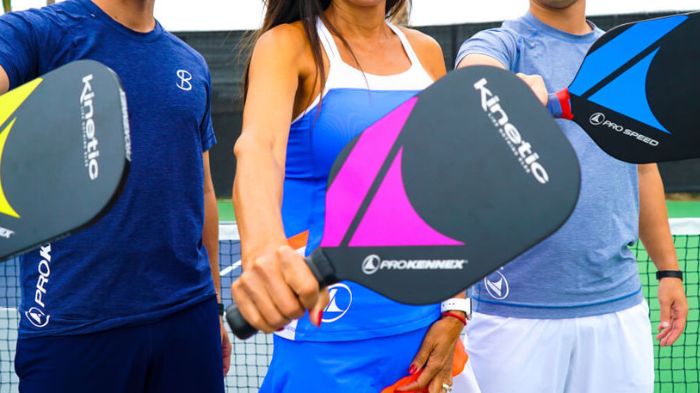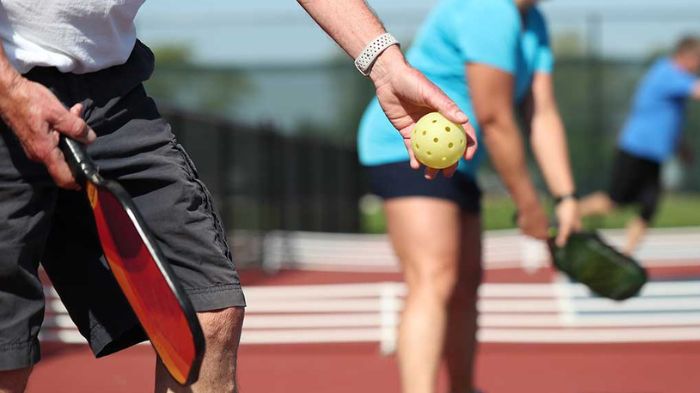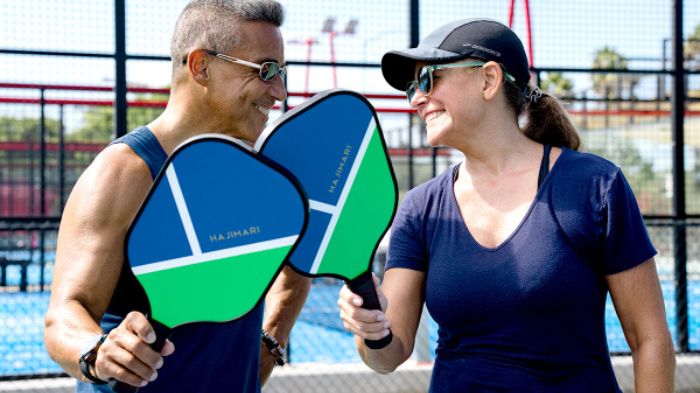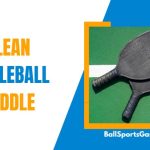Pickleball has taken the world by storm, and for a good reason! This exciting sport is an excellent way to get active, build endurance, and have fun with friends. But did you know that choosing the right pickleball paddle weight can significantly impact your gameplay? With so many options available on the market, it can be challenging to determine what is the best weight for a pickleball paddle.
In this blog post, we’ll discuss all you need to know about pickleball paddle weights and help you find the best match for your playing style.
How To Choose The Right Weight For You?

When it comes to choosing the right weight for your pickleball paddle, there are a few factors you’ll want to consider. The weight of your paddle can affect everything from the power and control you have over your shots, to how quickly you fatigue during gameplay.
Firstly, think about your playing style. If you prefer a more aggressive approach with hard-hitting shots, then you may benefit from a heavier paddle that offers increased power. Conversely, if finesse is more important to your game, a lighter paddle will give you greater control and manoeuvrability.
Another factor to consider is physical ability. A heavier paddle requires more strength and stamina to wield effectively over long periods of playtime. Therefore, if you’re new to the sport or struggle with arm or shoulder issues, opting for a lighter weight could be advantageous.
Evaluate personal preferences — Some pro pickleball players simply like the feel of certain pickleball paddle weights in their hand while others might need something that feels balanced overall. Ultimately finding what works best for you should always take priority when selecting any piece of equipment.
What Pickleball Paddle Should I Buy
Experienced players who value control: The best weight for a pickleball paddle largely depends on your level of expertise and playing style. If you’re an experienced player who values control over power, then a heavier paddle may be the way to go.
Speed and agility on the court: On the other hand, if you’re looking to increase your speed and agility on the court, then a lighter paddle would be more suitable. A lighter weight allows for quick movements and better reaction time during fast-paced rallies.
Pre-existing injuries and arm strain: It’s important to note that while a heavier paddle provides more power behind your shots, it can also cause fatigue in your arm after prolonged use. If you have any pre-existing injuries or concerns about arm strain, it is recommended that you opt for a lighter-weight paddle.
Personal preference and comfort: Ultimately, there is no one-size-fits-all answer when it comes to choosing the best weight for your pickleball paddle. It all comes down to personal preference and what feels comfortable in your hands as you play.
Trying out different paddles: Before making any final decisions on which weight to choose, consider trying out different paddles with varying weights at local sports stores or by borrowing from friends. This will give you a better idea of what works best for your individual playing style before investing in your own equipment.
Does Paddle Weight Matter?

When it comes to pickleball paddles, weight is one of the most crucial factors in determining your overall performance. But does paddle weight matter? The answer is yes and no.
- While some players swear by a lighter paddle for increased speed and manoeuvrability, others prefer a heavier option for added power and stability. Ultimately, the ideal weight depends on your playing style, physical strength, and personal preference.
- A lighter paddle can be easier to handle and control at the net, allowing for quick reactions during fast-paced rallies. However, it may lack the necessary force behind shots when playing from baseline pickleball positions or against wind resistance.
- On the other hand, a heavier paddle provides more power to hit hard shots with ease but can be tiring over extended gameplay sessions. It’s essential to find a balance between these two extremes that suits your unique needs as a player.
- To determine which weight works best for you personally, try out different options before committing to one particular choice. Whether you opt for lightweight or heavy paddles ultimately comes down to what feels comfortable in your hands while also providing optimal results on-court!
Different Types of Paddles and Their Weight
When it comes to different types of pickleball paddles, weight can vary depending on the materials used in construction. Wooden paddles tend to be heavier than composite or graphite options. A typical wooden paddle weighs around 10-12 ounces which may provide more power but less control and manoeuvrability.
Composite paddles are generally lighter than wood, weighing between 7-9 ounces. They offer a great balance between power and control making them a popular choice among players.
Graphite is the lightest material used for construction with pickleball paddle weights ranging from 6-8 ounces. These paddles are designed for precision shots like spike pickleball shots and quick reactions due to their lightweight nature.
It’s important to consider your own strength and play style when choosing a paddle weight as well as any regulations set by your league or tournament guidelines. Ultimately, finding the perfect combination of weight and material will greatly enhance your performance on the court.
No matter what type of paddle you choose, just remember that comfort is key! Make sure you feel comfortable handling your chosen paddle before taking it out onto the court for a game!
Pros and Cons of Different Types of Paddles
Comparison Table: pickleball paddle weight guide and Performance
| Weight Category | Comfort | Performance | Speed |
|---|---|---|---|
| Lightweight (under 7.3 oz) | Very comfortable | Good control, improved reflexes | May cause pain in the elbows |
| Mid-Weight (7.3-8.3 oz) | Comfortable | Good balance of power and control | Moderate speed, less power required for shots |
| Heavyweight (8.3 oz or more) | May cause pain in elbows | Good for power shots | Faster speed, easier to play deeper shots |

Note: The above table is based on the general characteristics of each weight category and may vary depending on the specific design and material of each paddle.
It is recommended to try out different weights and styles to find the best paddle for your individual playing style and preferences.
- The weight of a pickleball paddle affects a player’s comfort, performance, and speed on the court. There are three weight categories: lightweight, mid-weight, and heavyweight.
- Lightweight paddles, under 7.3 ounces, are ideal for players who prioritize control and accuracy. These paddles are easy to swing and allow for long practice sessions that improve reflexes. However, they require more arm strength to play power and longer shots, which can strain the elbows and shoulders.
- Mid-weight paddles, between 7.3 and 8.3 ounces, balance power and control. They are comfortable to use and put less strain on the arms than lightweight paddles. Mid-weight paddles can be a good choice for players with tennis elbow or those who want a mix of power and control.
- Heavyweight paddles, over 8.3 ounces, are best for players who prioritize power over control and technique. These paddles make it easier to play power shots and deeper shots, but they can cause elbow pain. Heavyweight paddles can be comfortable at first but add weight to the arm and can have negative long-term effects.
- Lightweight paddles are best for control, mid-weight paddles are good for a balance of power and control, and heavyweight paddles are best for power shots but can cause elbow pain. It’s essential to find the right weight and style of paddle that suits individual preferences and playing style.
FAQs
The weight of a pickleball paddle can affect your game in several ways. A heavier paddle can provide more power and stability but may be harder to maneuver quickly. A lighter paddle may offer better control and maneuverability but may not provide as much power. It’s essential to find the right balance of weight to match your playing style and preferences.
The most commonly used materials for pickleball paddles are wood, composite, and graphite. Wood paddles are the most affordable option and are excellent for beginners. Composite paddles are a mid-range option that offers a balance between affordability and performance. Graphite paddles are the most expensive but offer the best performance in terms of power and control.
The face of a pickleball paddle is the outermost layer that comes into contact with the ball. It can be made of different materials, such as fiberglass, graphite, or composite. The core is the interior layer and can be made of materials such as polymer, aluminum, or Nomex. The materials used in the face and core can significantly impact the performance of the paddle.
Choosing the right paddle depends on your playing style, skill level, and preferences. Beginners should look for lightweight paddles that offer better control and maneuverability. Advanced players may prefer heavier paddles that provide more power and stability. It’s also essential to consider the materials used in the paddle’s face and core and find the right balance of weight, grip size, and shape that feels comfortable to you.
Final Thoughts
As we come to the end of this article, it’s important to remember that choosing the perfect weight for your pickleball paddle is a personal decision. While there are general guidelines and recommendations, ultimately it comes down to what feels comfortable in your hands and helps you play at your best.
When considering paddle weight, think about factors such as your playing style, physical abilities, and any pre-existing injuries or conditions. It may be helpful to try out different weights before making a final decision. Remember that while paddle weight can make a difference in how you play, it’s not the only factor to consider. Grip size, shape, material, and other features all play a role in determining which paddle is right for you.
Picking the best weight for your pickleball paddle involves finding a balance between power and control. Whether you prefer a lighter or heavier option will depend on various individual factors unique to each player. So go ahead and experiment with different weights until you find one that works well for you.



